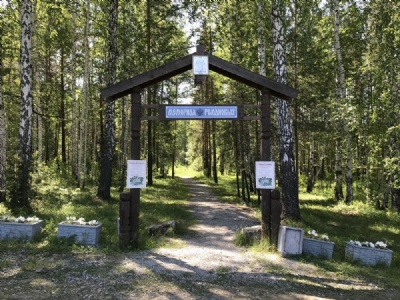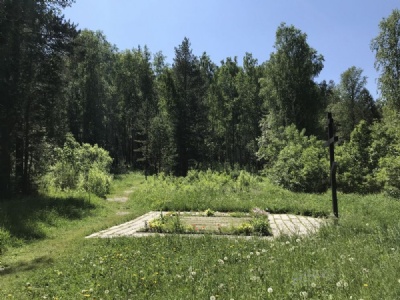Ekaterinburg
On October 20, 1884, Alexander III died of kidney disease and was succeeded by his eldest son, Nikolai II. That same year, Nikolai married Alexandra, the German princess of Hesse-Darmstadt. Between 1895 and 1904 they had five children, Olga, Tatiana, Maria, Anastasia and Alexei. The latter Aleksei was the rightful heir to the throne, but he suffered a hemorrhagic accident at an early age. Under Nikolai, the trans-Siberian railway was built, which opened up the road to the east. In order to expand eastwards, it was therefore important for Nikolai to maintain a status quo in the west. But Russia’s expansion and interest in the far east was seen by Japan as a threat to their interests.
A war between the two countries was therefore perhaps inevitable and in February 1904 Japan attacked Russia. The war was mainly fought over the city of Port Arthur where the Russian navy suffered a defeat that forced Nikolai to seek peace in the summer of 1905. This was a humiliating defeat and a great loss of prestige for Nikolai. Another event that took place during the war and which came to greatly undermine Nikolai was when his troops opened fire on a demonstration in St. Petersburg in January 1905. The demonstration aimed to improve the working conditions which former tsars had slowly but surely begun to introduce and loosen the living conditions of the serfs. But instead, it all ended with more than a thousand protesters being killed.
Nikolai saw himself as a autocrat but was nevertheless forced against his will to introduce a duma (legislative assembly). But he consistently refused to introduce reforms and appointed his own ministers. This further undermined his position. When the First World War broke out in 1914, Russia immediately got into trouble and suffered defeat at defeat. For lack of success, he appointed himself commander-in-chief despite his advisers being of a different opinion. Nikolai was usually reluctant to listen to his advisors and listened more to his wife’s advice and the person who is perhaps more than anyone else associated with the tsar family, Grigori Rasputin. This self-appointed man of God from Siberia came to have a great influence on the tsarist family both politically and spiritually. Too big would it turn out because he was murdered in 1916.
In line with military setbacks, dissatisfaction also grew on the home front where people were worse off. The fact that his wife was of German origin also added to the dissatisfaction and rumors that she was a German spy. Eventually, the situation became untenable for the tsar and he was forced to abdicate in February 1917. The leadership of Russia was taken over by the Provisional government and the tsar, his family and court were imprisoned. In the summer of 1917, a revolution/state coup by Lenin’s Bolsheviks could not be ruled out. The Tsar and his family were therefore moved to Tobolsk. Once the coup took place in October 1917 and the provisional government was overthrown, the tsar was still allowed to remain in Tobolsk, albeit under tougher surveillance than before.
One consequence of the coup was a civil war between the Bolsheviks and the Whites. Lenin therefore decided in april/may 1918 to move the tsar family to Ekaterinburg at the Urals, which was a strong Bolshevik stronghold. The family was placed in the. The Ipatiev house which was specially occupied precisely for this purpose and was therefore called for the house for special cases. In the middle of July of that year Lenin no longer dared to risk the czar and his family falling into the hands of the white. No written order from Lenin to execute the family was ever issued. But that the local Bolshevik leader Yakov Sverdlov would have acted without Lenin’s explicit approval is not likely.
On the night between 16 and 17 July 1918, the family was rudely awakened and taken to the basement where Yakov Yurovsky, the executor, read the death sentence to the tsar. What happened next was chaotic. The hastily inexperienced firing squad opened fire but the room was filled with smoke and the tsar family was quickly killed. Faced with the fact that they were still alive, albeit badly injured, the killers panicked and lost their badly damaged bodies with both piston and bayonets. But in the end, all had been brutally murdered and the bodies could then be taken away. The bodies were taken to a wooded area called Koptyaki about a mile north of Ekaterinburg. There the bodies were unloaded, stripped (the clothes were burned) and thrown into a mine shaft and soaked into sulfuric acid in an attempt to destroy the bodies.
However, the mine shaft was found not to be deep enough and the mutilated bodies lay and floated in the groundwater clearly visible. The perpetrators then tried to make the mine shaft collapse by first throwing hand grenades and then covering it with trees, twigs and other debris. But the very next day those responsible decided that the place was not safe and they decided to move the bodies to a safer place and bury them again. This also caused chaos and panic. Already after a few kilometers, the truck carrying the bodies was stuck in the marshland of Porosyonkov Log. They decided to bury the bodies in place. Once again, attempts were made to destroy the mutilated bodies and two of the bodies (Alexej and Maria) were burned and the remains were buried in another tomb a little further away to create confusion in the event of a discovery.
In 1924 Ekaterinburg was renamed Sverdlovsk after the former Bolshevik local leader Jakov Sverdlov, who died in 1919. Ipatiev the house was allowed to remain standing and it was no secret that the tsar family had been murdered in the house. However, the house came to be a burden for the authorities as it attracted pilgrims who wanted to remember and honor the last tsarist family. Therefore, as late as 1977, the Politburo decided that the house would be demolished because it was no longer of historical interest. It fell to a local communist leader named, Boris Yeltsin, to execute the decision. In 1991, the city regained its former name but the spirit of communism rests over the city.
Current status: Demolished with museum (2018).
Location: 56°56'30.51" N 60°28'21.63" E (Ganina Yama).
Get there: Car.
Follow up in books: Montefiore, Simon Sebag: The Romanovs: 1613-1918 (2017).
















In 1979, some amateur researchers had located the place where the bodies were buried, but then it was Communist times so they had to lay low about their findings. They couldn’t even mark the place and had to memorize it and just wait for better times. Only in connection with glasnost in the late eighties could the discovery be discussed. After the fall of the Soviet Union in 1991, more detailed investigations were carried out and in 1998 five of the bodies were returned to Saint Petersburg where they were buried in Peter Paul Fortress. The remains of Alexei and Maria were not found until 2007, but they are not yet buried.
In the early 2000s, a large orthodox church was built right next to the site where the Ipatiev house had been located, called the Church of All Saints, or Church on the Blood. Inside the church, all photography is strictly forbidden and women are expected to wear headgear and men are expected to wear pants that cover their knees. In the adjoining rooms of the church there is a small museum and there are also religious monuments both inside and outside the church. At the exact location of the Ipatiev house there is a small chapel and a hidden memorial. The tsarist family is now declared Saints and there are strong contradictions between historians and the orthodox church about how the memory after the tsar family should be preserved.
The tomb in Koptyaki is called Ganina Yama and is after the fall of the Soviet Union a sacred memorial with several chapels and memorials with a strong religious character that should not be underestimated. It is not always that ordinary tourists and guides are appreciated by the clergy. Clearly noticed that my guide was careful in everything he did and did not want to draw the priests’ attention. The former mine shaft is now a sink surrounded by a wooden planad. Just like in the church in Ekaterinburg, both men and women are expected to wear respectable attire. Photography is allowed outside but not inside the chapel. At Porosyonkov Log there is a smaller memorial but it does not have the same religious character. The graves have been marked out and the place is actually more interesting than Ganina Yama.